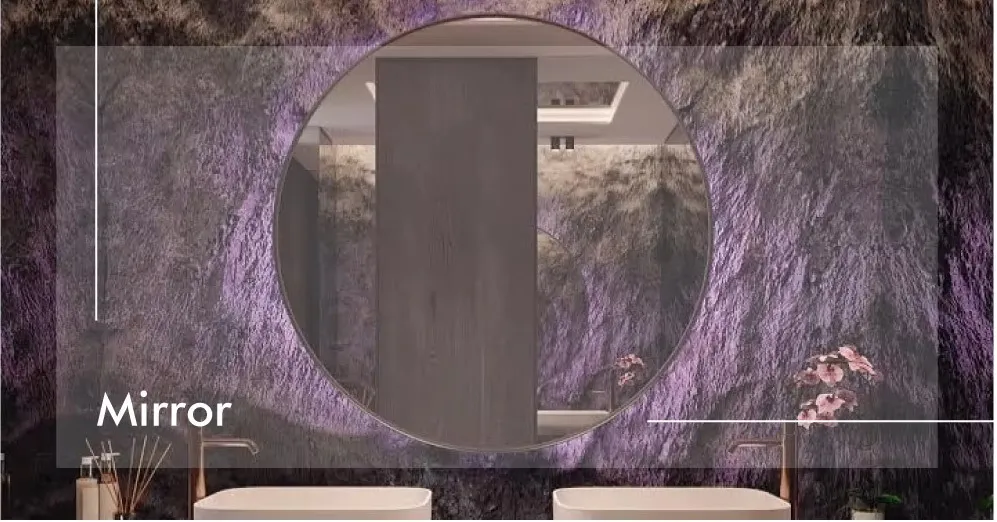
Artistic Shapes Guide: How Unique Mirror Shapes Enhance Your Design

Let's talk about mirrors – not just as practical objects but as powerful artistic expressions. When you consider that the word "artistic" means "showing skill or excellence in execution" and "exhibiting taste and discriminating judgment" , it perfectly captures what mirrors can be when approached with creativity. Far from being just functional items, uniquely shaped mirrors become sculptural elements that tell visual stories in your spaces.
Why Shape Matters More Than You Think
We often focus on mirror frames or placement, but the silhouette itself is transformative. Geometric mirrors amplify modern aesthetics while organic shapes soften minimalist spaces. I've seen arched mirrors add cathedral-like grandeur to tiny powder rooms and starburst shapes create dazzling focal points in mundane hallways. The psychology is fascinating too – circular mirrors promote flow and harmony, while angular designs energize with dynamic tension.
Breaking Free from Rectangles: Shape Exploration
Organic & Freeform
Cloud-shaped mirrors bring dreamy softness, perfect for bedrooms or meditation spaces. Leaf silhouettes connect interiors with nature. These imperfect forms feel human and approachable – great antidotes to boxy architecture.
Geometric Precision
Hexagons create modern honeycomb effects, trapezoids offer playful asymmetry, and starburst patterns radiate energy. Polygons create depth and dimension without adding clutter.
Architectural Curves
Gothic arches lend drama, softened circles build harmony, and crescent moons introduce celestial magic. Arched mirrors visually raise ceilings – my secret trick for compact spaces.
Asymmetrical Wonders
Purposefully irregular shapes stimulate curiosity. A teardrop mirror in a reading nook or a sculptural abstract piece over a fireplace becomes instant conversation art.
Design Synergy: Pairing Shapes with Styles
Mid-Century Modern: Pair sunburst mirrors with warm woods and atomic-era decor. The radial lines echo period lighting and furniture designs.
Bohemian: Mix irregular natural shapes with macramé and plants. A wavy-edged mirror above a rattan console creates cohesive texture.
Industrial: Angular steel-framed polygons complement exposed pipes and concrete. Try a multi-panel geometric installation on a brick feature wall.
Minimalist: Let a single oversized circle float on a neutral wall. The simplicity becomes sculptural without clutter.
Traditional: Ornate gothic arches with gilt details enhance classic spaces. Oval mirrors with carved frames maintain heritage elegance.
Transformative Placement Strategies
Place asymmetrical shapes where eyes naturally travel – like stairwell landings or hallway terminals. Position circular mirrors near angular furniture for visual tension-release. Cluster smaller abstract shapes as gallery walls that double-reflect light. Over-scale organic mirrors make tiny bathrooms feel spa-like by visually "dissolving" walls.
One studio apartment I redesigned used a triptych of irregular ovals that gave the illusion of windows. Another client placed a large sunburst mirror opposite their city view, creating dazzling light reflections that changed throughout the day. These examples show how mirrors become collaborators with your space's existing qualities.
Beyond Decor: Psychological Dimensions
Unique mirror shapes aren't just visually pleasing – they impact how we experience spaces. Curved shapes induce calm in stressful areas like home offices. Angled designs boost energy in workout rooms or kitchens. Multiple smaller shapes (like geometric clusters) stimulate creativity in studios. Scientific studies show we perceive circular mirrors as more "welcoming" compared to sharp-edged rectangles.
Practical Considerations
While unconventional shapes dazzle, functionality shouldn't suffer. Maintain usable reflection surfaces at key heights (eye-level areas). Install securely – unusual shapes may require custom hardware. Balance bold mirror shapes with simpler surroundings to avoid visual chaos. For luxury hotels or high-traffic areas, consider durability aspects in your integrated bathroom solutions where moisture resistance matters.
Cultural Narratives in Shapes
Mirror designs across cultures carry meaning: Islamic geometric patterns reflect mathematical spirituality; Chinese moon gates symbolize unity; African tribal motifs tell community stories. Modern designers reinvent these with abstracted interpretations. By understanding these roots, we see mirrors as cultural storytellers.
Future Trends: Where Shape Innovation is Headed
Digital fabrication now allows truly custom bio-morphic shapes mimicking coral or tree formations. "Smart" mirrors with integrated lighting add functionality to elaborate shapes. Textured surfaces create shadow-play on the mirror planes themselves. Look for increased layering – multiple shaped mirrors at different depths creating 3D effects.
Ultimately, choosing an artistic mirror shape is a declaration about how you interpret space. It's about saying light matters, reflection matters, seeing ourselves and our surroundings in unexpected ways matters. So go beyond the rectangle. Whether choosing a minimalist geometric piece or an ornate sculptural statement, let your mirror's shape reveal not just what's there, but what could be.
Tags:
Recommend Products











